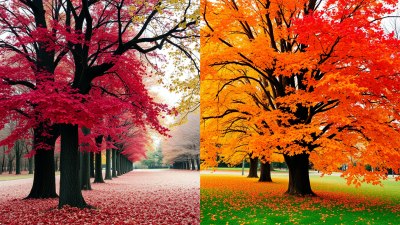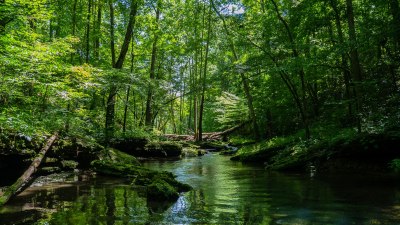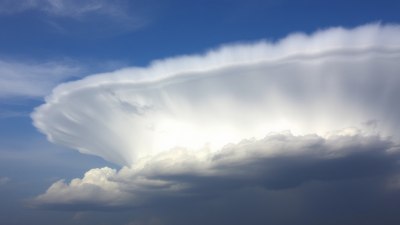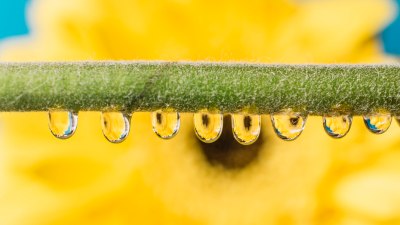Why Some Rain Smells Different
Explore the science behind the distinct smells of rain, including petrichor and other factors influencing scent.
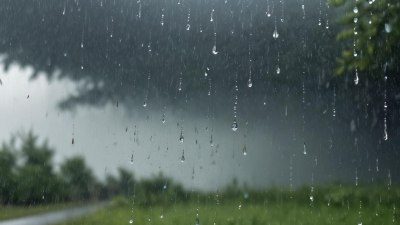
This image was created with the assistance of Freepik
Rain brings a unique and refreshing scent that many people cherish. This aroma, often referred to as petrichor, has intrigued scientists and nature lovers alike. Have you ever stepped outside after a rainstorm and noticed different smells? This article delves into the nuances of why some rain smells different from others, exploring the science behind these scents and the various factors contributing to the unique olfactory experience of rain.
To understand the difference in smells, we must first focus on the compound termed petrichor. Petrichor is the pleasant, earthy scent produced when rain falls on dry soil. The term was introduced in 1964 by Australian researchers Isabel Joy Bear and Richard G. Thomas, who discovered that this aroma comes from two main sources: plant oils and a compound called geosmin, produced by soil-dwelling bacteria.
What Is Petrichor?
Petrichor originates from oil secreted by plants during dry weather. These oils are absorbed by soil and rocks. When it rains, raindrops displace these oils, releasing them into the air along with geosmin, a compound generated by actinobacteria in the soil. Geosmin has a distinct earthy scent that triggers a response in human olfactory receptors. Collectively, these elements create the scent associated with rain, often evoking memories and emotions.
The Role of Geosmin
Geosmin is crucial in explaining why rain smells different in various regions. This compound has a very strong impact on what we perceive as the smell of rain. For example, in a garden or forest, the presence of certain plants can cause an increase in the amount of oils released into the atmosphere. Different plants produce different oils, ultimately leading to varying scents of petrichor after rain. Actinobacteria also vary from one ecosystem to another, affecting the quantity of geosmin produced. Thus, the geographical location influences the concentration of these molecules in the air, resulting in distinct smells of rain across different environments.
The Impact of Soil Type
The type of soil plays an integral role in shaping the scent of rain. Sandy soils tend to drain quickly, which may result in less distinct rain smells. In contrast, clay soils, which retain moisture, typically release more aroma compounds when wet. This difference occurs because clay holds onto organic materials longer, providing a richer medium for bacteria to thrive and produce geosmin. Similarly, nutrient-rich soils often contain various minerals and organic matter that contribute to a broader range of scents. Thus, the soil composition can significantly affect the characteristics of the rain smell.
Microbial Activity and Rain
The microbial community present in the soil also influences the scent of rain. Various bacteria exist in different regions, and their metabolic activities can affect the formation of odor compounds. For instance, some bacteria produce additional volatile organic compounds (VOCs) that contribute to the complexity of the scent. This variability in microbial populations can lead to different olfactory experiences even during the same weather conditions. The presence of certain species may enhance or diminish the intensity of petrichor, adding to the diversity of how we perceive rain smells.
Seasonal Factors
Seasons play a crucial role in affecting how rain smells. During the spring, increased plant growth and microbial activity result in more oils and geosmin being produced. Consequently, rain during this time often has a more pronounced aroma. In contrast, summer rains may smell different due to higher temperatures, where the heat causes more rapid evaporation of oils before the rain can effectively release them into the air. Fall rains can bring a different experience as decaying leaves contribute additional organic compounds to the soil, altering the scent profile. These seasonal variations contribute to the diverse experiences associated with rain smells.
Urban vs. Rural Rain
Another contributing factor to the difference in rain smells is urbanization. In urban areas, pollution and human activity can alter the natural scents of rain. Chemicals from vehicles, buildings, and industries may mix with the otherwise pleasant petrichor scent to create an unpleasant aroma. In contrast, rural areas bond more closely with nature, where rain typically produces a more authentic and appreciated smell free from pollutants. Moreover, urban rainfall often interacts with impervious surfaces like concrete, influencing the way scents are released and dispersed in the air.
The Importance of Rain Smell
Understanding the various scents associated with rain can be more than just an aesthetic or olfactory pleasure; it has practical applications as well. The fresh smell of rain triggers positive emotions and can boost mood and productivity. Moreover, many cultures associate rain smells with good fortune or renewal, enhancing our emotional response to changing weather patterns. This connection is particularly valuable in agriculture, where the scent of rain can signal the onset of a growing season, instilling hope and anticipation among farmers.
Personal Experiences and Anecdotes
Personal experiences often shape the way we perceive and remember the smell of rain. Different individuals may hold different memories or emotional attachments to various scents. For example, a child playing outside during a summer rainstorm might remember the joy associated with that experience, causing them to perceive rain smells more positively. Conversely, someone who experienced floods or storms might associate the scent with anxiety or fear. These personal narratives play a significant role in how smells are interpreted and cherished, further emphasizing that the subjective experience of rain is often filled with meaning.
The chemical composition behind the smell of rain reflects a complex interplay of natural phenomena. Factors such as local soil types, plant life, microbial communities, and urban environments intertwine, culminating in varied rain smells that evoke rich emotions and memories. Whether it's the fresh scent of petrichor wafting through a garden after a spring rainfall or the smell of damp earth following a summer storm, each aroma tells a story and connects us to the world around us. By appreciating the nuances of how rain smells differently across various settings, we deepen our understanding of the natural environment and foster a greater connection with nature.

